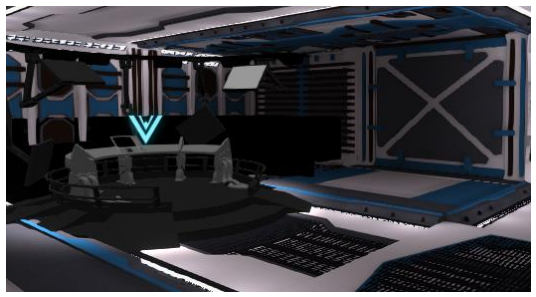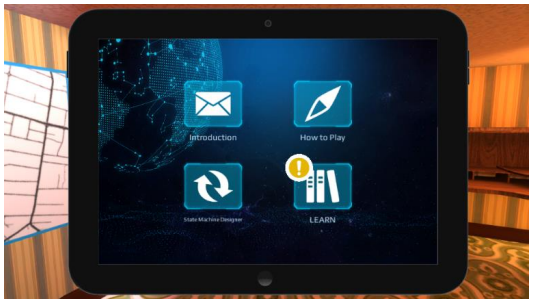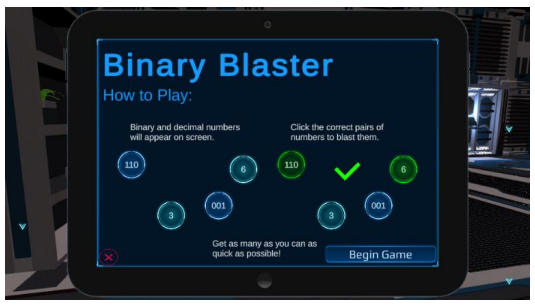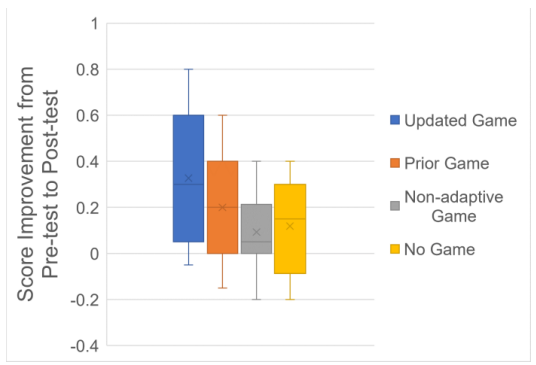This content originally appeared on HackerNoon and was authored by Gamifications
:::info Authors:
(1) Ying Tang, Dept. of Electrical and Computer Engineering, Rowan University, Glassboro, NJ, USA (tang@rowan.edu);
(2) Ryan Hare, Dept. of Electrical and Computer Engineering, Rowan University, Glassboro, NJ, USA (harer6@rowan.edu).
:::
Table of Links
II. Overview of PING System and Gridlock
III. Design Insights and Educational Impact
III. DESIGN INSIGHTS AND EDUCATIONAL IMPACT
A. Design Insights and Student Feedback
\ When discussing design changes made in the game with regards to student feedback, the iterations focused on three main areas: Interface design, student testing, and tutorials/student assistance.
\ 1) Interface Design
\ For interface design, we had a few main considerations. First, the target audience for the game is highly generalized, and thus includes players who are and are not familiar with virtual games. For players who are familiar with virtual games, certain aspects such as a standard control scheme and familiar interface elements are enough for players to understand the goals, controls, and objective of the game. For example, the updated game features a system of objective markers shown in Figure 4, where students receive a visual indication of their current objective. Even among students who were less familiar with virtual games, a visual indicator marking their objective helps to significantly improve their ability to navigate the virtual environment.
\

\ Outside of marking objectives, it was also very important to have both a stated objective and a guide on the control scheme of the game. For Gridlock, students can open up a “how to play” screen at any time that indicates the control scheme of the game. Additionally, students can also access a “current objectives” screen that has a written statement of their current objective. Among players experienced with virtual games, these features were largely ignored. However, their inclusion is crucial to help players who are unfamiliar with navigating virtual game environments.
\ One final aspect that also helped students navigate the environment was “notification” markers on certain in-game utilities. For example, when students start the game, they have a notification on one of the menu options. This incentivizes them to click this option, thus taking them to the assistance menu, as shown in Figure 5. This way, students are already familiarized with this menu before it becomes relevant, allowing them to have a smoother experience in the latter parts of the game.
\

\ 2) Student Testing
\ Another modification that was well-received among students was the replacement of some testing methods with interactive mini-games or puzzles. In each of these basic games, students receive an instructional prompt before participating. These games are designed in such a way that we can gather data on the students’ knowledge while they play. For example, as shown in Figure 6, students are tested on their ability to convert binary numbers through a game where they are tasked with matching binary numbers to their decimal counterparts as quickly as possible.
\

\ 3) Student Assistance
\ Finally, the in-game tutorials were also modified as per student feedback. In prior iterations, accessing the personalized assistance provided to students was required for students to progress. Furthermore, the assistance was specifically tailored to a student’s issues. In the updated version of the game, the assistance is general-purpose, but students are directed to a specific area that addresses their issues. This way, students have the option to manually explore additional help materials. Additionally, students now must manually access the help materials, which prevents the help prompts from breaking the flow of the game. If a student is performing poorly, the game can also put a notification marker on the help menu to encourage the student to request help.
\ With all these changes, students have much more freedom to either accept the help as given, explore additional content at their own pace, or to ignore the help entirely and attempt to solve problems on their own. This gives students guidance if they need it, and the freedom to explore and solve problems without being limited or interrupted by the system.
\ B. Educational Impact
\ Preliminary results for an evaluation of educational efficacy use a pre-test and a post-test administered before and after students played the game, respectively. These tests asked students to design a state machine for a vending machine; a task which has a similar required skill set as the traffic light problem in the game.
\

\ Figure 7 shows a comparison of score improvement among students from our pre-test to the post-test. Students were graded on both assignments on a scale from 0 to 1, and the graph compares four scenarios: 1) The updated game with PING system integration, modified based on student feedback as per the design statements outlined in this paper (𝑁 = 13); 2) The prior version of the game with PING system integration (𝑁 = 20); 3) An old version of Gridlock that did not use the PING system (𝑁 = 14); and 4) Students who did not play the game (𝑁 = 8). As shown, students who played the updated game had greater improvement over students who played the prior version of the game. Additionally, there were a fewer number of students who regressed or showed little improvement compared to past classroom evaluations. This is likely due to the new quality of life features and easier-to-access help documentation making it both easier and less frustrating for students to learn with Gridlock.
\
:::info This paper is available on arxiv under CC BY 4.0 DEED license.
:::
\
This content originally appeared on HackerNoon and was authored by Gamifications
Gamifications | Sciencx (2024-07-17T13:00:13+00:00) Enhancing Learning with Gamified Instruction: Design Insights and Educational Impact. Retrieved from https://www.scien.cx/2024/07/17/enhancing-learning-with-gamified-instruction-design-insights-and-educational-impact/
Please log in to upload a file.
There are no updates yet.
Click the Upload button above to add an update.
